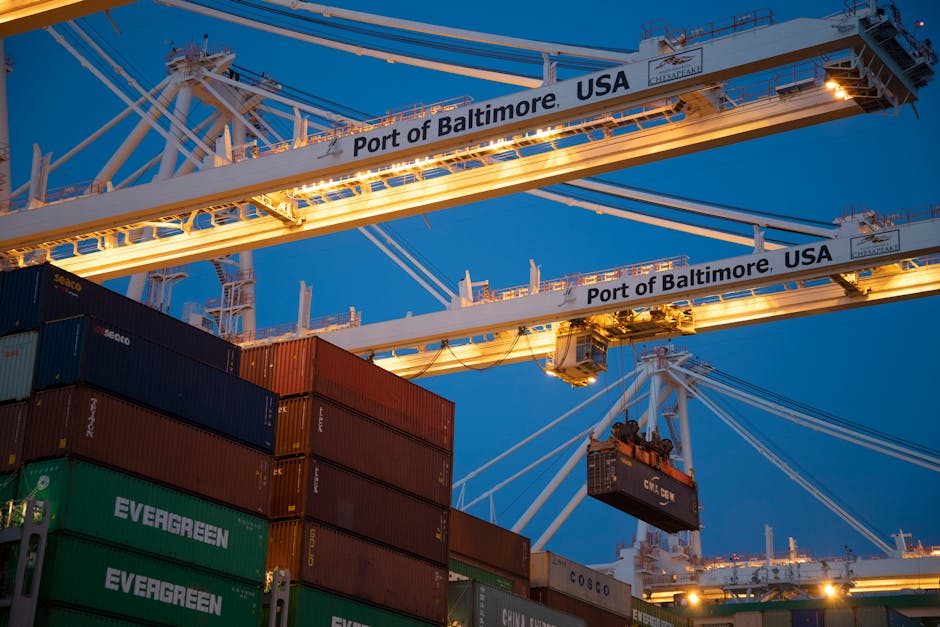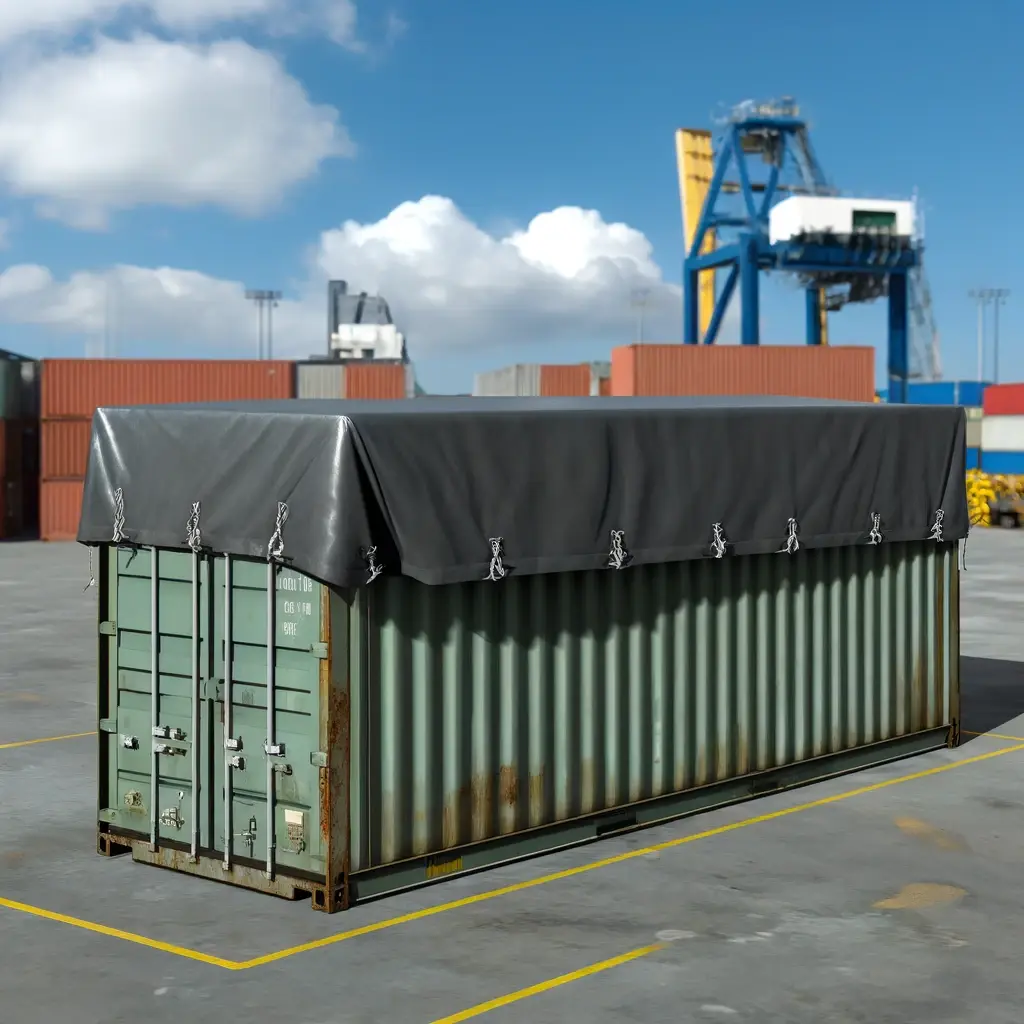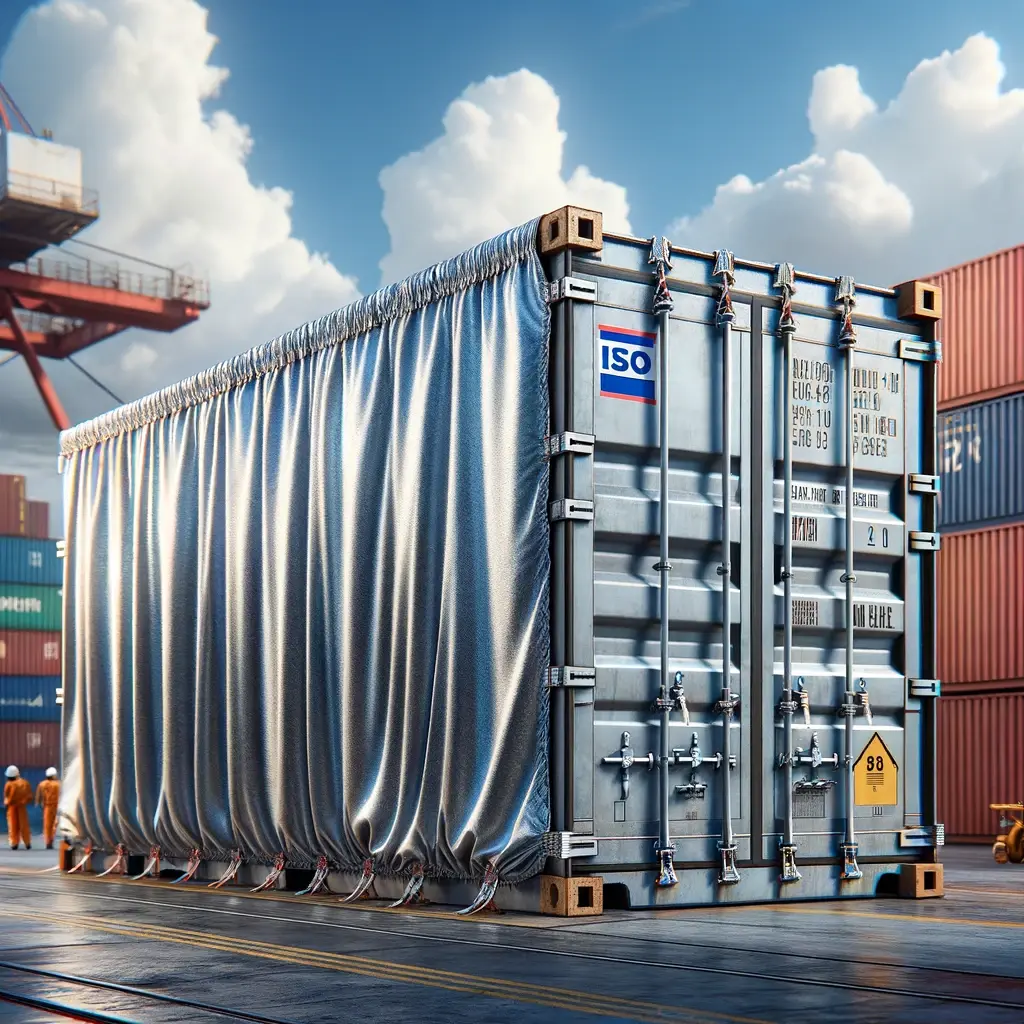
Introduction to Shipping Container Tarp Covers
Container tarp covers might not be eye-catchers, but they excel in defense. Designed to fend off rain, sunlight, grime, and harm, these covers stand guard over your containers—whether docked, stored, or in transit. Crafted from robust materials such as polyethylene or vinyl, the tarps boast toughness, water resistance, and resilience against tears and UV damage. A high-quality tarp cover can greatly prolong a container’s lifespan by warding off rust and deterioration, making it a wise investment for safeguarding your shipping containers and their contents.
The Importance of Protecting Your Shipping Containers
Protecting your shipping containers goes beyond aesthetics; it’s essential for cost savings and hassle prevention. When left exposed to rain, sun, and wind, containers degrade rapidly. Rust, corrosion, and difficult-to-open doors can drastically reduce their lifespan. Investing in durable tarp covers is the solution. By covering your container with a high-quality tarp, you shield it from extreme weather conditions, maintaining its dryness and stabilizing internal temperatures. This proactive measure not only addresses immediate expenses but also prevents the premature repair or replacement of containers. Essentially, a reliable tarp cover now translates to savings in the long run.
Different Types of Shipping Container Tarp Covers
When it comes to protecting your shipping containers from the elements, choosing the right tarp cover is crucial. There are several types to consider, each with its own set of benefits. Poly tarps are lightweight and easy to handle, making them a great choice for short-term use or mild weather conditions. They’re also the most cost-effective option. If you’re dealing with harsher conditions, canvas tarps might be your pick. They’re breathable, reducing condensation and preventing rust on your containers. However, they are a bit heavier and more expensive. For the ultimate protection, vinyl tarps stand out. They’re waterproof, UV-resistant, and incredibly durable, ideal for long-term use or extreme weather. They are pricier but often worth the investment for their longevity. Lastly, mesh tarps are perfect if you need airflow while covering your containers, such as in hot climates to avoid overheating. Remember, the right tarp can significantly extend the life of your shipping containers, so choose based on your specific needs.
Key Features to Look for in Durable Tarp Covers
When buying tarp covers for your shipping containers, focus on a few crucial features to ensure durability. Firstly, material matters. Look for polyethylene or vinyl; these materials resist water, UV damage, and tears better than others. Second, thickness counts. A thicker tarp means more protection against the elements. Aim for tarps that are at least 8 mils thick. Third, consider the reinforcement. Reinforced corners and edges can prevent wear and tear, extending the life of the tarp. Fourth, secure the fit. Tarps with grommets or tie-downs offer a snugger fit, reducing the risk of damage from high winds. Lastly, UV protection is vital. A UV-resistant coating will keep your tarp from breaking down under the sun. By focusing on these features, you can ensure your shipping containers are well-protected for the long haul.
How Tarp Covers Extend the Life of Shipping Containers
Shipping containers face harsh weather and daily wear, putting them at risk of rust and damage. Tarp covers are the shields they need. Made of strong materials, these covers block rain, snow, and intense sun from harming the container’s surface. By doing so, they stop rust from starting, which is a big deal. Rust can eat through a container, making it weak and unsafe. But there’s more. Tarps also keep the paint on the container looking fresh and prevent small dings and scratches caused by flying debris. This means your container doesn’t just last longer, it also stays looking good. Investing in a good quality tarp cover isn’t just about protection, it’s about saving money in the long run. No need to repair or repaint your container as often. It’s clear, using tarp covers is a smart move to keep your shipping containers in top shape for years.
Installation Tips for Shipping Container Tarp Covers
Getting your shipping container tarp cover on right can make a big difference. It’s not just about slapping it on; you gotta do it with some finesse if you want it to last. First off, make sure your container is clean. Dirt or debris can mess with the fit. Next, choose the right size cover. Too small and you’re stretching it; too big and it’s a flappy mess in the wind. Now, when you’re fitting the cover, start from one end and work your way to the other. This step-by-step approach helps avoid any awkward bunching. Secure it properly – most tarps come with grommets, so use strong ropes or bungee cords to tie it down tight. And here’s a pro tip: angle the cover slightly. This way, rainwater runs off rather than pooling up and stressing the material. Last, check it regularly. A small tear can turn into a big problem if you ignore it. So, there you have it. Keep it clean, size it right, secure it tight, and give it a quick look now and then. That’s your game plan for a tarp cover that sticks around.
Maintenance and Care for Your Tarp Covers
Taking care of your tarp covers will not only extend their life but also ensure they continue protecting your shipping containers effectively. First, always clean your tarps after use. Dirt and moisture can lead to mold and mildew, which weaken the fabric. Use mild soap and water, rinse well, and make sure they’re completely dry before folding for storage. Avoid harsh chemicals as they can damage the material. Secondly, inspect your tarps regularly. Look for tears, holes, and frayed edges. Early detection of damage means you can repair before it gets worse. Small tears can often be fixed with tarp repair tape or a patch kit, easily found at most hardware stores. It’s much cheaper than replacing the whole cover. When it comes to storage, keep your tarps in a cool, dry place. Direct sunlight can degrade the fabric over time, so avoid leaving them outside when not in use. Lastly, when installing or removing your tarp covers, be gentle. Yanking or pulling too hard can cause unnecessary stress on the material, leading to tears. By following these straightforward steps, you’re not only saving money in the long run but also ensuring your shipping containers remain in tip-top condition, shielded from the elements by tarps that are as durable as day one.
Cost-Benefit Analysis of Using Tarp Covers
Investing in tarp covers may seem like an added expense, but it’s a smart move that pays off. Tarps protect your shipping containers from weather damage like rain, sun, and snow, which can lead to rust and wear. The cost of a tarp cover depends on its size, material, and quality. Generally, you might spend between (50 to )500 for a good one. But think about it; replacing a shipping container can cost thousands. By using tarps, you slow down the container’s aging process, stretching its service life. This move saves you money in the long run since you don’t have to replace containers as often. Plus, tarps keep your goods in better condition during transport, reducing the chance of damage-related losses. It’s a small investment upfront that leads to significant savings and less hassle down the road.
Common Mistakes to Avoid While Choosing Tarp Covers
Choosing the right tarp covers for your shipping containers is crucial, but it’s easy to trip up. Let’s keep this simple: first, folks often overlook the material. Think about weather conditions your container will face. If it’s going to be under the scorching sun or in an area with heavy rainfall, pick a material that stands up to that. Polyethylene tarps are great for water resistance, while canvas is a no-go in heavy rain but excellent for breathability and reducing condensation. Second, size matters. A tarp too small won’t cover your container properly. Too big, and you’re dealing with unnecessary flapping that could weaken its ties. Get the measurements right. Third, never forget the importance of UV resistance. Sun damage can degrade your tarp quicker than you’d think. Ensuring it’s UV resistant will extend its life. And lastly, don’t skimp on quality to save a few bucks. Cheap covers wear out fast and end up costing more in the long run because you’ll replace them more often. So, pick a tarp that’s strong, suits your climate, fits just right, and can take a beating from the sun. Avoiding these common pitfalls will keep your shipping containers protected for the long haul.
Conclusion: Maximizing Your Investment with Shipping Container Tarp Covers
In wrapping up, adopting durable tarp covers for your shipping containers is a smart move to protect your investment. Not only do these covers shield your containers from harsh weather conditions, but they also prevent rust and reduce wear and tear. This means your shipping containers can serve you longer than they would without protection. It’s a cost-effective strategy that pays off by extending the life of your containers, saving you money in the long run. Remember, quality matters. Opting for high-quality tarp covers might seem like a more substantial initial expense, but the longevity and protection they offer make it a wise investment. Take the step to safeguard your containers and maximize your investment with reliable shipping container tarp covers.
Contact Delta Mark for all of your tarp needs!



